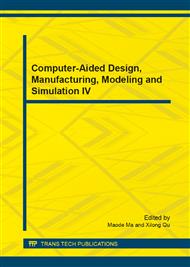p.3
p.7
p.14
p.19
p.23
p.31
p.36
p.41
Research on the Separation Performance of Deoiling Hydrocyclones
Abstract:
This paper uses FLUENT as the researching tools of 3D numerical simulation of deoiling hydrocyclones, analysis on the geometric structure of deoiling Hydrocyclone, summed up a set of grid partition method based on the basic theory and turbulence simulation of CFD theory, to determine a reasonable mathematical model, boundary conditions, convection diffusion the discrete format and pressure velocity coupling algorithm. This paper establishes the mathematical model, calculation method and the optimization principle for the separation mechanism; it also provides basic theory and experience for studying on deoiling hydrocyclone such as separation mechanism, flow and turbulent scalar field characteristics and structure optimization design.
Info:
Periodical:
Pages:
14-18
Citation:
Online since:
October 2014
Authors:
Price:
Сopyright:
© 2014 Trans Tech Publications Ltd. All Rights Reserved
Share:
Citation:


